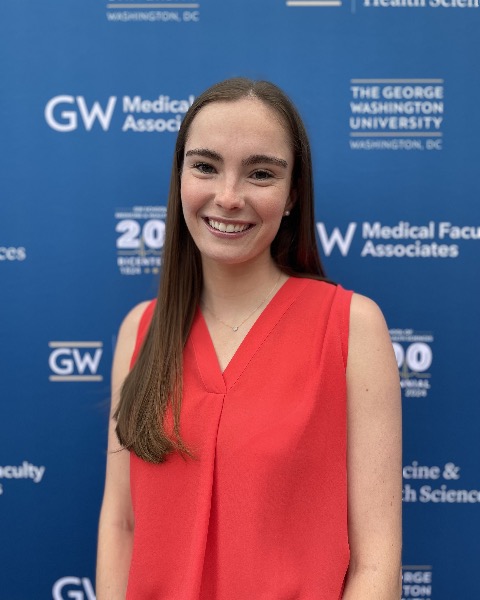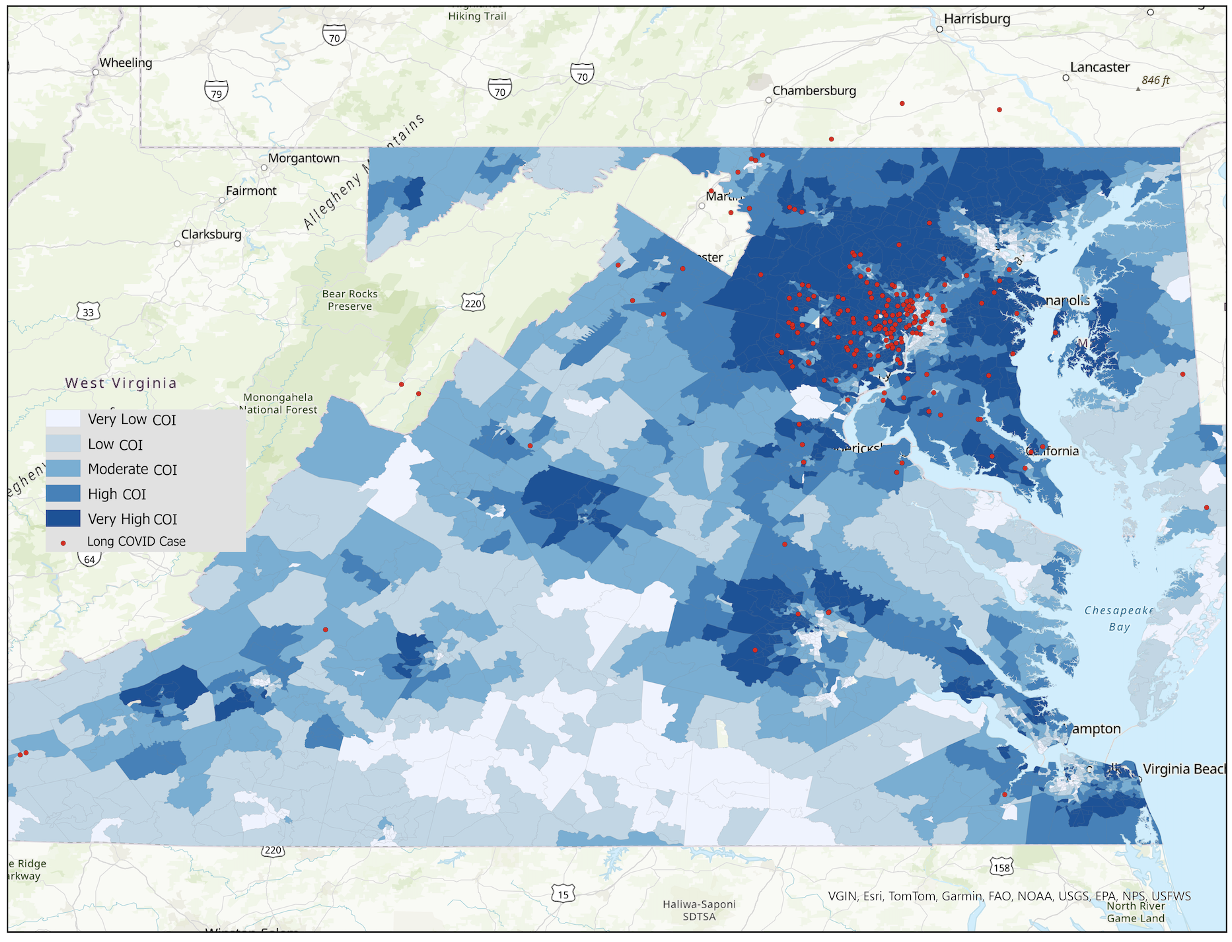Health Equity/Social Determinants of Health 7
Session: Health Equity/Social Determinants of Health 7
750 - Relationship between Childhood Opportunity Index and Pediatric Patients Presenting with Long COVID
Sunday, April 27, 2025
8:30am - 10:45am HST
Publication Number: 750.6476
Erin McLaughlin, George Washington University School of Medicine and Health Sciences, Elma, NY, United States; Anand Gourishankar, Children's National Hospital/George Washington University, Washington, DC, United States; Alexandra B. Yonts, Children's National Health System, Silver Spring, MD, United States

Erin McLaughlin (she/her/hers)
Medical Student
George Washington University School of Medicine and Health Sciences
Elma, New York, United States
Presenting Author(s)
Background: Long COVID, a disabling, multi-organ syndrome, presents in up to 25% of children following acute COVID-19 illness. Data from adult studies suggest marginalized populations are disproportionately affected by acute COVID-19 and Long COVID. However, the demographics and disparities of pediatric patients with Long COVID are understudied. With few pediatric providers specializing in Long COVID and limited community knowledge about the disease, we hypothesize there have been great disparities in which groups of patients have access to care. This study aims to highlight the demographic characteristics and geographic distribution of pediatric patients with Long COVID presenting to a Medicaid-accepting, multidisciplinary pediatric Long COVID clinic in Washington, DC.
Objective: To describe the demographics of pediatric patients with Long COVID presenting for care and their association with the childhood opportunity index (COI).
Design/Methods: This is a retrospective cross-sectional study of pediatric patients with Long COVID from the District of Columbia (DC), Maryland (MD), and Virginia (VA) presenting to a tertiary Pediatric Post-COVID Program Clinic from May 2021 to January 2024. Using ArcGIS Pro, addresses were geocoded, and the Long COVID case map was overlaid onto the COI map. Frequencies were displayed as proportions. Categorical values were analyzed using Fisher’s exact and Cramer’s V tests.
Results: In this cohort of 194 patients, the mean age was 12.75 years (SD 4.19),110 (57%) were female, 122 (63%) were Caucasian, and 72 (37%) were non-Caucasian. The map showed Long COVID patients were clustered in very high COI regions: 113 (58%) very high COI, 39 (20%) high COI, 26 (13%) moderate COI, and 16 (8%) low COI. Patients from DC, MD, and VA and their COI had a statistically significant association (Fisher’s p = 0.09, Cramer’s V = 0.17).
Conclusion(s): Most pediatric patients with Long COVID presenting to the clinic were from very high COI areas, indicating geographic disparity. Among the three states, patients from very high COI areas were more likely to present to the clinic than patients from other levels of COI. This finding suggests access to specialty healthcare may be a serious problem for children who inevitably suffer from Long COVID in low COI regions, which would likely widen pre-existing health disparities. Resources must be allocated to appropriately study, screen for, diagnose, and treat children with Long COVID living in low COI regions.
Table 1. Number of Pediatric Patients Presenting with Long COVID in each COI category

Figure 1. Geographic distribution in relation to COI of Pediatric Patients presenting with Long COVID from DC, MD, and VA Presenting to Clinic from May 2021 to January 2024


